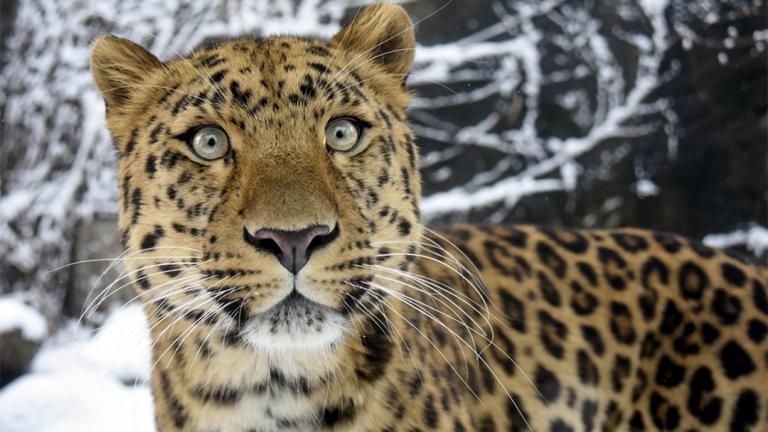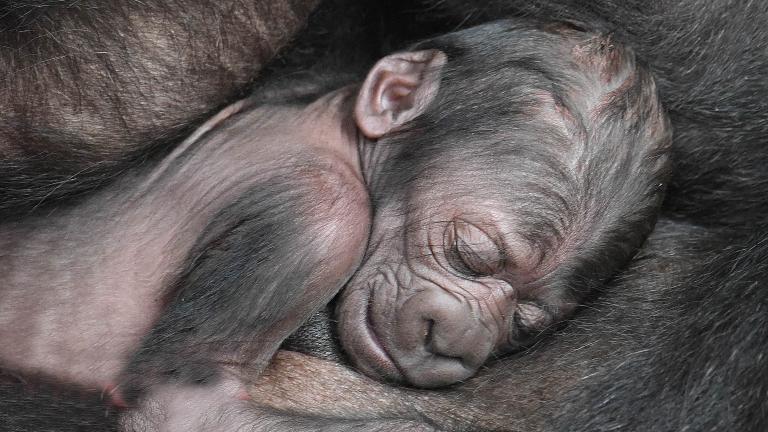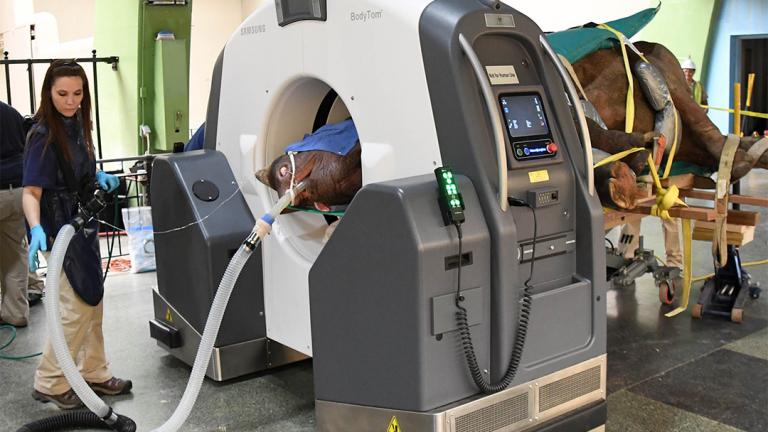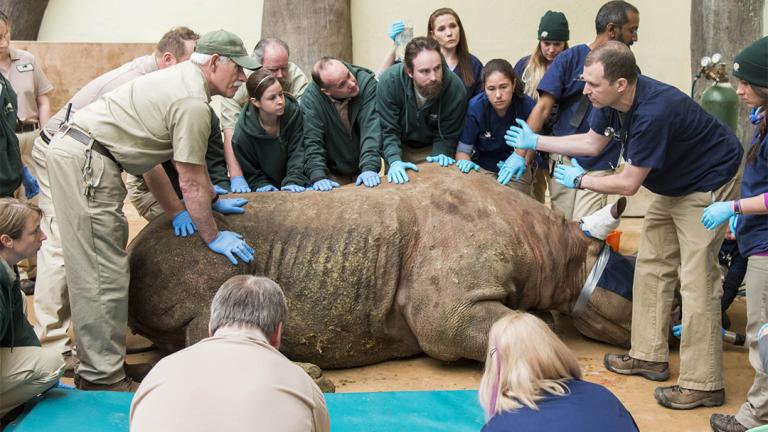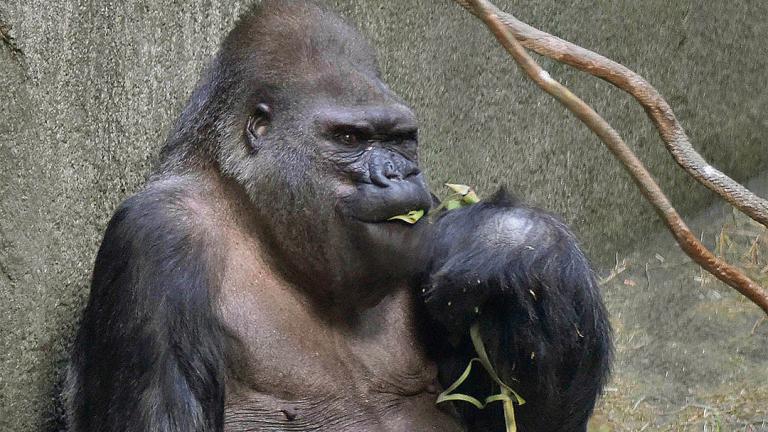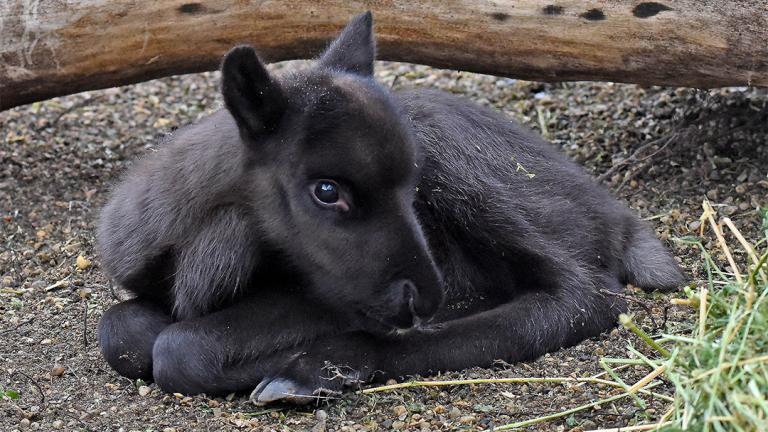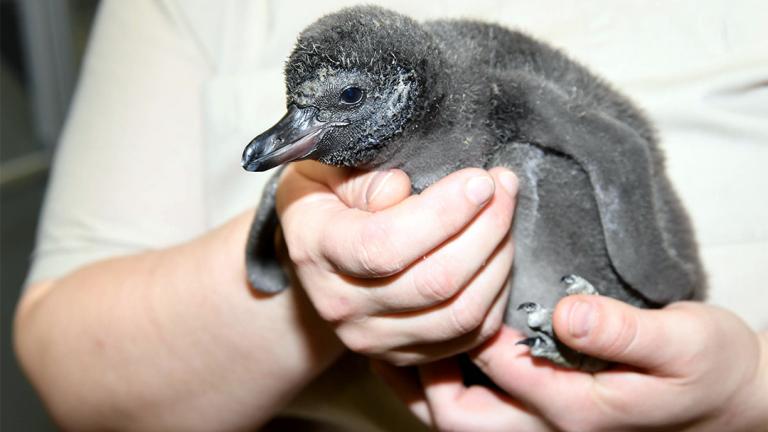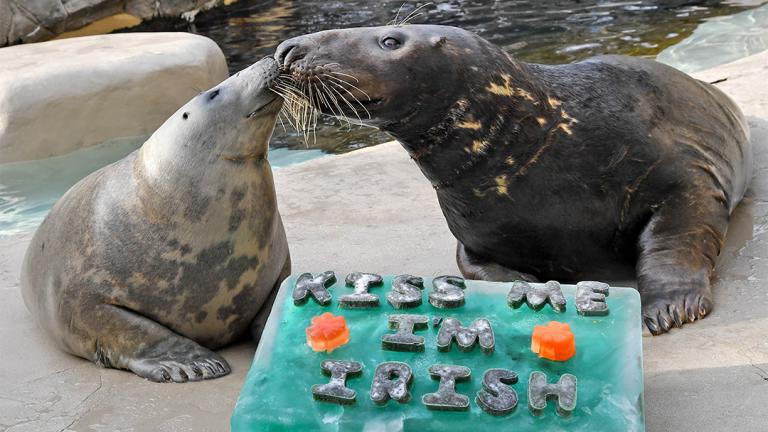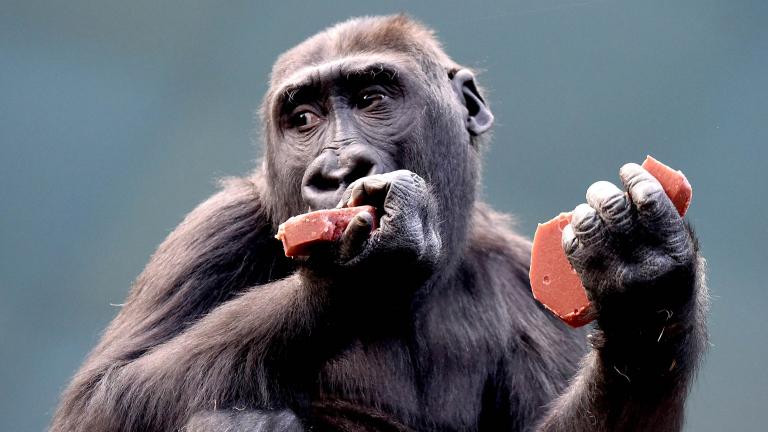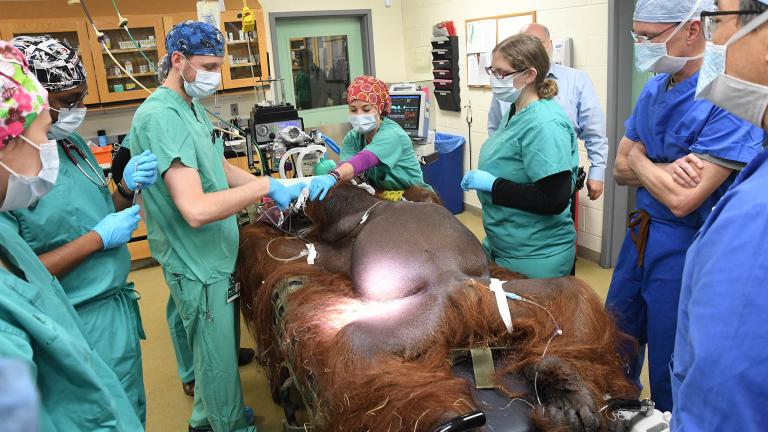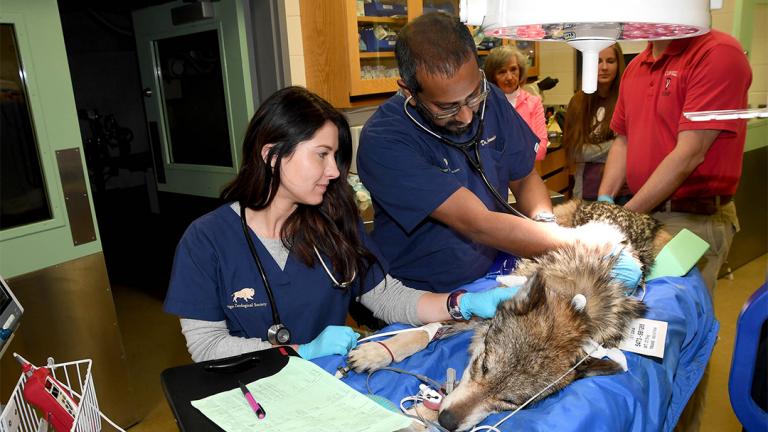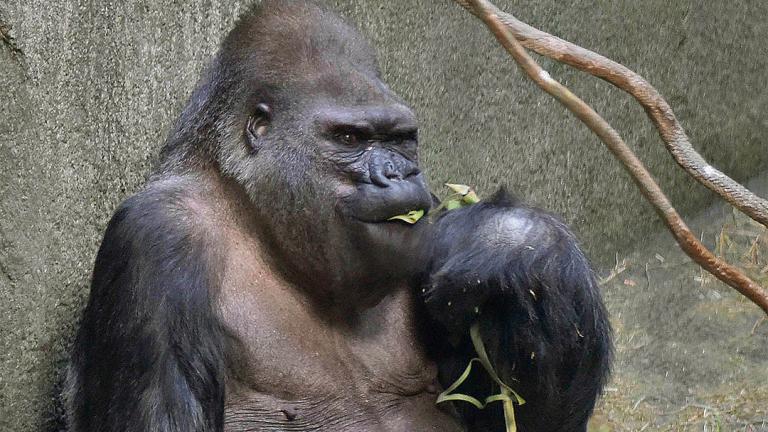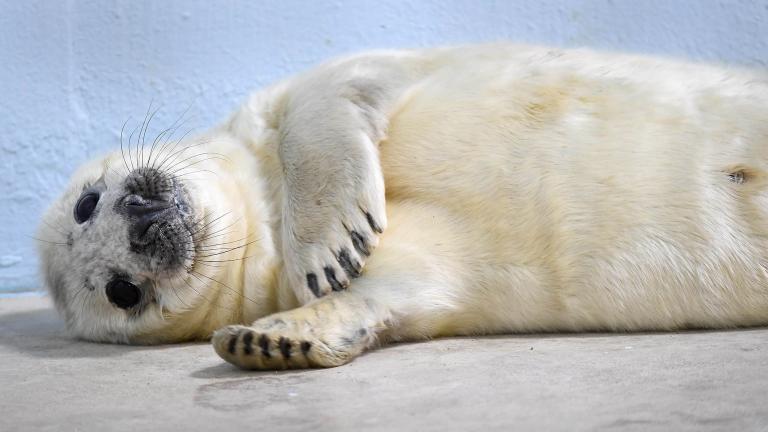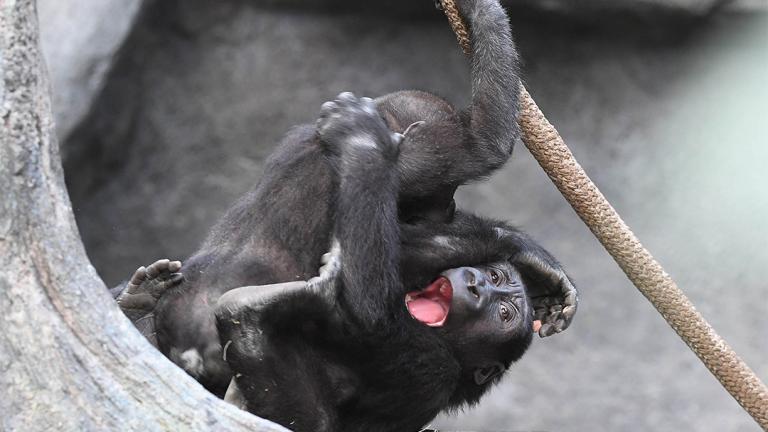A set of proteins long used to evaluate the well-being of humans can also serve as a marker for the welfare of animals in zoos and aquariums, according to a new study.
Brookfield Zoo
The latest member of Brookfield Zoo’s four-generation family of western lowland gorillas was born June 1, the third offspring of Koola, the newborn’s 23-year-old mother.
Get a close-up look at 100 live eight-legged critters – aka arachnids – including spiders, scorpions, tarantulas and more at Brookfield Zoo.
Following a historic diagnostic procedure last month, Layla, a 2,300-pound eastern black rhinoceros, underwent life-saving surgery last week to relieve an infection.
Hoping to identify the source of an infection, veterinarians performed what is thought to be the first ever CT scan on a rhinoceros.
The 50-year-old gorilla was the zoo’s oldest animal. “Knowing it’s the right decision doesn’t make it hurt any less,” said Amy Roberts, curator of mammals for the Chicago Zoological Society.
One year after welcoming its first baby reindeer in nearly four decades, Brookfield Zoo added another newborn fawn this week.
The yet-to-be-named chick is healthy and being hand-reared by animal care staff, the zoo said this week.
St. Patrick’s Day festivities kicked off a day early at Brookfield Zoo last week, where seals, camels, lemurs, orangutans and gorillas got shamrock-shaped and green-colored treats.
Date or no date, single or taken, animals at Brookfield Zoo experienced Valentine’s Day with the best kind of gift: food.
Ben, a 40-year-old orangutan at Brookfield Zoo, underwent an emergency appendectomy last month after veterinary staff discovered a ruptured appendix.
Nearly 30 years ago, scientists began collecting semen samples from Mexican wolves. On Sunday, Brookfield Zoo artificially inseminated one wolf as part of an effort to boost the genetic health of the endangered species.
Ramar, one of the oldest gorillas in the country, celebrated a milestone birthday this month with a frozen “cake” filled with fruit and raisins.
Brookfield Zoo welcomed a newborn gray seal on Dec. 26. The male pup weighed 36 pounds at birth and is expected to weigh more than 120 pounds by the time he is weaned at three weeks.
Brookfield Zoo is leading a first-of-its-kind study to collect data from dolphins and other aquatic mammals using a Fitbit-like device that figures to revolutionize human understanding of the animals’ behavior.
From siblings with snowballs to wrestling chimpanzees, playful behavior is usually easy to spot. But the question of why we play – and whether we all play for the same reasons – is less apparent.

